Whether you’re a first-time homebuyer, a seasoned real estate agent, or an investor looking for the best deal, understanding the nuances between fixed-rate and adjustable-rate mortgages is crucial. In this blog, we’ll break down the key differences, pros, and cons of each, helping you make an informed decision that aligns with your financial goals and lifestyle.
Fixed-Rate Mortgages Explained
A fixed-rate mortgage is a type of home loan where the interest rate remains constant throughout the life of the loan. This means your monthly payments will stay the same, making it easier to budget and plan for the long term.
Fixed-rate mortgages are typically available in 15-year, 20-year, and 30-year terms. The predictability of these loans makes them a popular choice among homebuyers who prefer stability and want to avoid the uncertainty of fluctuating interest rates.
However, it’s essential to understand that while the stability of fixed-rate mortgages is appealing, they often come with higher initial interest rates compared to adjustable-rate options. This higher rate can mean larger monthly payments, especially for shorter-term loans like the 15-year mortgage.
Pros and Cons of Fixed-Rate Mortgages
Stability and Predictability
One of the most significant advantages of a fixed-rate mortgage is its stability. Knowing that your mortgage payment will remain the same each month can provide peace of mind, especially in a volatile economic environment. This predictability allows you to budget more effectively and avoid surprises.
Additionally, fixed-rate mortgages protect you from rising interest rates. If market rates increase, your mortgage rate remains unchanged, potentially saving you money over the life of the loan. This stability is particularly beneficial for homebuyers planning to stay in their homes for the long term.
Higher Initial Interest Rates
While the stability of fixed-rate mortgages is a significant benefit, it often comes at the cost of higher initial interest rates. Compared to adjustable-rate mortgages, fixed-rate loans typically have higher rates, which can result in larger monthly payments. This higher cost may be a drawback for some homebuyers, especially those with tight budgets or short-term housing plans.
Despite the higher initial rates, many homebuyers find the peace of mind and predictability offered by fixed-rate mortgages worth the extra cost. For those who value stability and long-term financial planning, a fixed-rate mortgage is often the preferred choice.
Limited Flexibility
Another potential downside of fixed-rate mortgages is their limited flexibility. If interest rates fall significantly after you’ve locked in your rate, you won’t benefit from the lower rates unless you refinance your mortgage. Refinancing can be a costly and time-consuming process, potentially negating some of the savings from the lower interest rate.
Additionally, fixed-rate mortgages may not be the best option for homebuyers who plan to move within a few years. The higher initial rates and longer commitment may not align with short-term housing plans. In such cases, an adjustable-rate mortgage might be a more suitable choice.
Adjustable-Rate Mortgages Explained
An adjustable-rate mortgage (ARM) is a type of home loan where the interest rate adjusts periodically based on an index reflecting the cost to the lender of borrowing on the credit markets. ARMs often start with a lower initial interest rate compared to fixed-rate mortgages, but the rate can change over time.
ARMs are usually structured with an initial fixed-rate period, which can range from one to ten years. After this initial period, the interest rate adjusts at specified intervals, typically annually. The adjustment is based on a specific index, such as the LIBOR (London Interbank Offered Rate) or the U.S. Treasury rate, plus a margin.
While the lower initial interest rate of ARMs can make them an attractive option for some homebuyers, it’s essential to understand the potential risks and complexities associated with these loans.
Pros and Cons of Adjustable-Rate Mortgages
Initial Affordability
One of the most significant advantages of adjustable-rate mortgages is their initial affordability. The lower initial interest rates can result in smaller monthly payments, making homeownership more accessible for some buyers. This lower cost can also allow borrowers to qualify for a larger loan amount, potentially enabling them to purchase a more expensive home.
For homebuyers who plan to move or refinance before the adjustable period begins, an ARM can be a cost-effective option. The initial savings can be substantial, especially in the first few years of the loan.
Potential Risks
While the initial affordability of ARMs is appealing, it’s essential to consider the potential risks. Once the initial fixed-rate period ends, the interest rate can adjust, leading to higher monthly payments. If market interest rates rise significantly, borrowers may face substantial increases in their mortgage payments.
This unpredictability can make budgeting and financial planning more challenging. Borrowers must be prepared for the possibility of higher payments and ensure they have the financial flexibility to handle potential increases.
Complexity and Uncertainty
Adjustable-rate mortgages can be more complex than fixed-rate loans, with various terms and conditions that borrowers must understand. It’s crucial to read the fine print and fully comprehend how the rate adjustments work, including the index used, the margin, and any rate caps that limit how much the interest rate can increase.
The uncertainty associated with ARMs can be a significant drawback for some homebuyers. If you prefer stability and predictability in your mortgage payments, a fixed-rate mortgage may be a better fit.
Choosing Between Fixed-Rate and Adjustable-Rate Mortgages
When deciding between a fixed-rate and adjustable-rate mortgage, several factors come into play. Your financial situation, future plans, and the current economic environment are all critical considerations.
Financial Situation
Your current financial situation and long-term goals will significantly influence your choice of mortgage. If you have a stable income and prefer predictable monthly payments, a fixed-rate mortgage may be the best option. The stability and peace of mind offered by fixed-rate loans can be invaluable for many homebuyers.
On the other hand, if you’re looking to maximize your purchasing power and take advantage of lower initial rates, an adjustable-rate mortgage might be more suitable. Just be sure to carefully consider the potential risks and ensure you have the financial flexibility to handle future rate adjustments.
Future Plans
Your plans for the future are another essential consideration. If you plan to stay in your home for many years, the predictability of a fixed-rate mortgage can be beneficial. However, if you expect to move or refinance within a few years, the lower initial rates of an ARM might make more sense.
It’s also important to consider potential life changes, such as job relocations or family expansions, that could impact your housing needs. Understanding your long-term plans can help you choose the mortgage that best aligns with your future.
Economic Conditions
The current economic environment and interest rate trends can also influence your decision. If interest rates are low and expected to rise, locking in a fixed-rate mortgage can protect you from future rate increases. Conversely, if rates are high and expected to fall, an adjustable-rate mortgage might offer more savings in the long run.
Staying informed about economic conditions and working with a knowledgeable mortgage advisor can help you make the best choice for your unique situation.
Investor Perspective
Mark, a real estate investor, chose an adjustable-rate mortgage for one of his rental properties. The lower initial rates allowed him to maximize cash flow and invest in additional properties. However, he also ensured he had a financial cushion to handle potential rate adjustments.
These testimonials highlight the importance of considering your unique circumstances and financial goals when choosing a mortgage.
Tips for Finding the Best Mortgage
Finding the best mortgage for your needs involves careful research and consideration. Here are some tips to help you make an informed decision:
Shop Around
Don’t settle for the first mortgage offer you receive. Take the time to compare rates and terms from multiple lenders. This comparison can help you find the best deal and save money over the life of the loan.
Understand the Terms
Make sure you fully understand the terms of your mortgage, including the interest rate, repayment schedule, and any potential fees. If you’re considering an adjustable-rate mortgage, be sure to comprehend how the rate adjustments work and what factors influence them.
Conclusion
Choosing between a fixed-rate and adjustable-rate mortgage is a significant decision that requires careful consideration of your financial situation, future plans, and the current economic environment. Both types of mortgages have their pros and cons, and the best choice will vary depending on your unique circumstances.
Whether you value the stability and predictability of a fixed-rate mortgage or the initial affordability of an adjustable-rate mortgage, understanding the nuances of each option is essential. By considering your long-term goals and seeking professional advice, you can make an informed decision that aligns with your financial future.
If you need further assistance or have questions about choosing the right mortgage, don’t hesitate to reach out to our expert advisors. We’re here to help you every step of the way.






